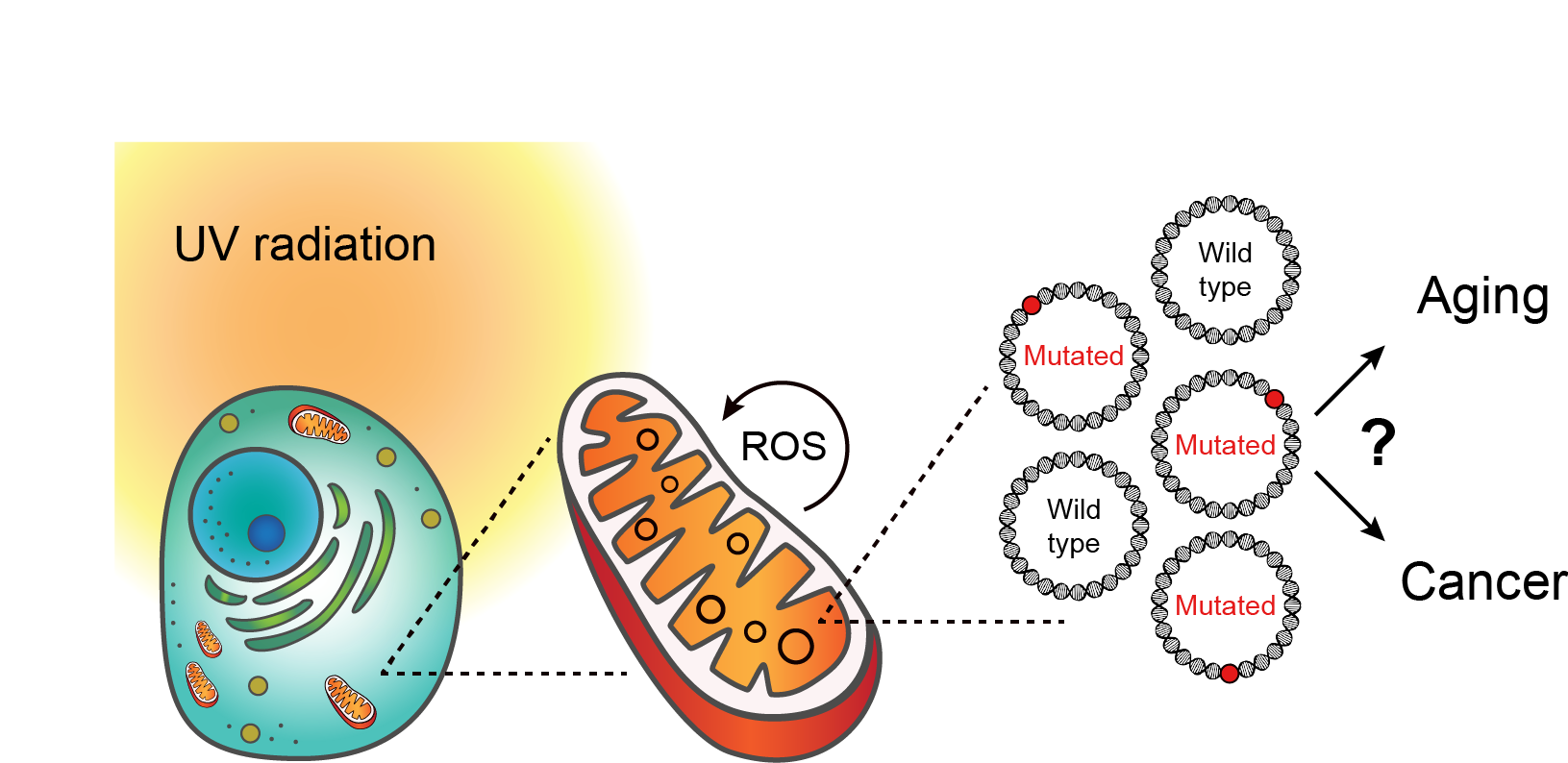Mechanisms of UV-light-induced mutations in the mitochondrial genome
Exposure to UV radiation is one of the determinants of human aging and is a leading cause of skin cancer. UV radiation can damage DNA by directly reacting with nucleobases to form photolesions and indirectly by generating reactive oxygen species (ROS) that can oxidize DNA. Increased levels of ROS are associated with mutations in mitochondrial DNA (mtDNA), and with a generalized instability of both nuclear and mitochondrial genomes. Mutations in mtDNA are a major threat for the cell, as they lead to cellular alterations in bioenergetics and an overall decline in cellular fitness. Currently, it is not well understood how UV-induced mutations in the mitochondrial genome form or how UV-induced damage is distributed in genomic DNA in the nucleus. The focus of this research area is to understand molecular mechanisms of UV-induced mtDNA damage and to quantify candidate biomarkers of disease and aging linked to sunlight exposure. To this end, we are applying molecular biology techniques and microscopy-based readouts to monitor, in real time, the generation of UV-light-induced mutations within the mtDNA. By dissecting the molecular mechanisms underlying the generation of these genetic lesions, our findings will help in understanding cancer etiology and discovering biomarkers for human disease prevention.
Representative Publication
Fontana, G. A. and Gahlon, H. L. Mechanisms of replication and repair in mitochondrial DNA deletion formation. Nucleic Acids Research (2020) 48, 11244–11258.
external page https://doi.org/10.1093/nar/gkaa804
Collaboration and Funding Partners
Migros-Genossenschafts-Bund (MGB)
ETH Zurich Foundation
Project team member
Claudia Aloisi
Navnit Kaur Singh
